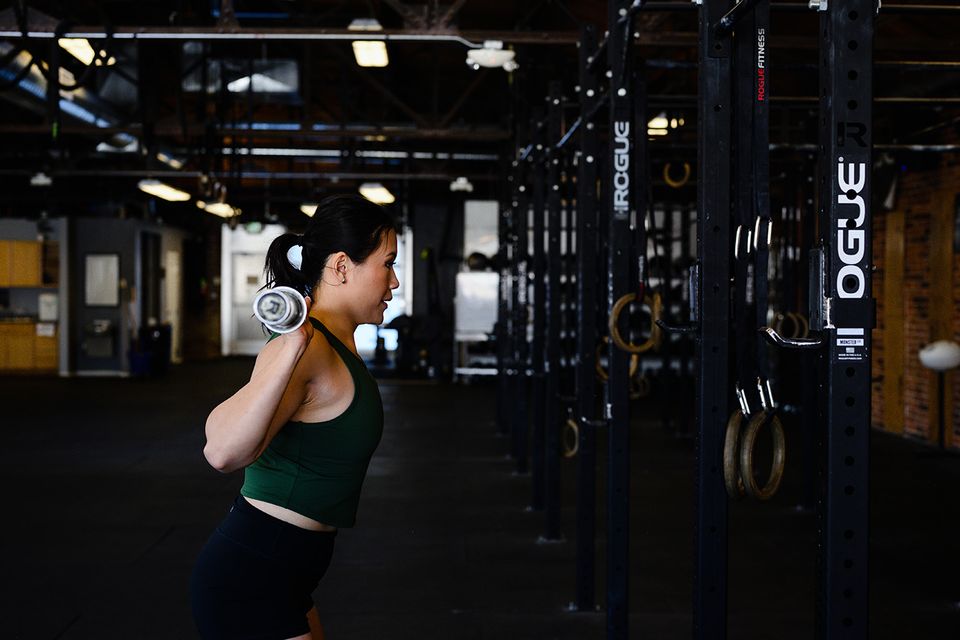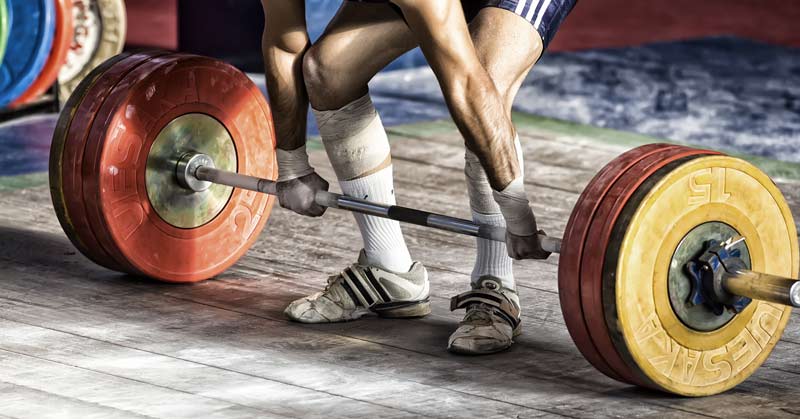Why I quit CrossFit

I first built up the courage to step into a CrossFit gym in 2015, at the early age of 22. I was brand new to the world of fitness, having never so much as lifted a weight or signed up for a gym membership before. Little did I know at the time that CrossFit would change my life, and before long, I would be completely hooked.
CrossFit was not only my initiation into strength training, but it was my initiation into adulthood. It was through CrossFit that I learned proper technique for the major lifts, and it was through CrossFit that I learned how to do hard things and get comfortable being uncomfortable. I will be forever thankful the resilience and confidence I gained from doing CrossFit all this time.
Nonetheless, all good things must come to an end, and it is finally time for me to say farewell to the exercise modality that I've tied my identity to for years. Training decisions are very personal, and I want to be clear that I have nothing but love for CrossFit. Still, I want to share the reasons why I personally decided to change gears.
1. Unsustainable intensity

As I have aged and evolved, so have my training goals and needs. As a young gun in my early 20s, I craved the challenge of constantly testing my limits in the gym. But as I've gotten older, I've realized that the always-on, high intensity nature of CrossFit is no longer feasible for me.
Try as I might to regulate my effort, the adrenaline-packed workouts often drained my energy, ramped up my stress, and lowered my capacity for mental and emotional work for the rest of the day. As my career and family obligations grew, I found myself struggling to recover adequately between sessions. The relentless, high intensity nature of CrossFit was beginning to break me down more than it built me up.
2. Variation at the expense of progress
Variation is a hallmark of CrossFit training, and it's one of the aspects that initially drew me in. The constantly changing workouts provided novelty and were clearly more fun than traditional gym routines. However, as I progressed, I hit the dreaded "intermediate plateau" and my varied exercise routine started to work against me. I was no longer getting the stimulus I needed to hit bigger numbers in my lifts, to run any faster, or to develop new skills.
The science of exercise points to the principle of progressive overload as the key to continual progress. This principle states that for muscles to grow bigger and stronger, they must be regularly challenged in a way that increases the demand placed on them. This increase can take several forms: more weight, more repetitions, or shorter rest periods, among other factors. The crucial component is consistency, repetition, and progression in a limited set of exercises.

The workouts of the day (WODs) in CrossFit, while varied and full-body-focused, often do not follow a structured progression in specific movements. They tend to include a wide range of movements, from weightlifting to gymnastics to conditioning, often mixed together in a single workout. While this broad approach can develop general physical preparedness (GPP), it may not allow for the frequent and consistent exposure to specific exercises necessary to improve significantly in those exercises. This is especially true for intermediate and advanced athletes.
For instance, if one class includes heavy squats, it might be another week or more before heavy squats appear in a WOD again. In the meantime, the workouts might focus on other movements such as running, rowing, pull-ups, or power cleans. This lack of consistent exposure to the squat can limit the body's ability to adapt to it and hinder progress.
3. Compromising movement quality for speed
In CrossFit workouts, athletes are frequently pushed to complete as many rounds or reps as possible in a set timeframe, or complete a predetermined set of exercises as quickly as possible. While the time incentive drives intensity higher, it encourages compromised form in favor of higher rep counts or faster times.
As a coach, I know that maintaining correct form during any kind of resistance exercise is essential. Good form not only ensures that the intended muscles are activated and worked effectively, it also preserves the structural integrity of joints and significantly reduces the risk of injury. When we rush through movements or perform them while fatigued, movement quality tends to go out the window and leave us prone to injury.

This risk is particularly high in CrossFit due to the nature of many of the exercises. Complex, technical lifts such as cleans and snatches require a high level of skill, mental focus, and body control. When these movements are rushed or performed under high fatigue, it's a recipe for disaster.
Having coached CrossFit myself, I've unfortunately witnessed this problem firsthand. I've seen dedicated members injure themselves as they pushed to shave a few seconds off their time or squeeze in a few extra reps. It pained me to see them get hurt in the process, and I felt guilty that I wasn't able to prevent this outcome as a coach. While I can accept some of the responsibility, I was also helplessly tied to the design of workouts that favored speed over quality.
In addition to the immediate risk of injury, compromising form can also hinder long-term progress. With poor form, the intended muscles may not be adequately engaged or stabilized. This both reduces the effectiveness of the exercise, and leads to compensatory techniques and muscular imbalances. As a result, progress stalls while bad movement patterns are reinforced.
4. Gaps in addressing individual needs

This last point is not necessarily a criticism of CrossFit in particular, but rather an observation that group fitness classes are inadequate for addressing individual needs. We all have unique bodies and training backgrounds, which often means unique physical weaknesses and imbalances that need extra attention.
Personally, my biggest struggle as an athlete is a functional imbalance between the two sides of my lower body. My right leg is significantly stronger than my left leg, and both my right hip and right ankle are less mobile than their counterparts. Since CrossFit focuses almost exclusively on bilateral movements for lower body, my imbalance was exacerbated over time, causing me pain and discomfort on my right side.
I learned over time that I needed to do more unilateral exercises, such as Bulgarian split squats and single leg RDLs, to address my issues. And I had to take time outside of CrossFit classes to tackle these in order to stay healthy.
What's next for me
Despite the drawbacks of the CrossFit methodology, it did have a profound impact on how I understand fitness and how I prefer to exercise. While I don't intend to return to CrossFit proper, I fully intend to follow its approach to "hybrid" and "multi-modal" training as long as I can. That is, I will always balance both strength and conditioning without sacrificing one for the other, and I will always switch up my mode of training from time to time.
Nowadays, what is working best for me is building my training routine around a specialized primary goal, and supplementing with secondary training that keeps me as well-rounded as possible. For instance, I am currently spending most of my time training for a marathon, and complementing it with Olympic weightlifting and specific isolation exercises for my weak muscles. By narrowing down my focus, I am able to achieve targeted progress, which feels more rewarding for me personally.
In time, I am sure that I will eventually get bored of running and rotate my primary goal to something else.

So long for now
With all that said, I still believe that CrossFit is an excellent starting point for those who are new to strength training. The passion of the CrossFit community for their sport is truly unmatched. I feel fortunate that I got to be a part of it and I have no regrets.
However, I also hope to see CrossFit as an organization recognize and invest in its opportunities for growth. I hope to see CrossFit develop a more rigorous and comprehensive coaching education, to divorce highly technical movements from time-limited workouts, and to consider how to better accommodate the varied needs of its athletes.
Because of CrossFit, I am stronger, healthier, and more self-assured. My personal fitness journey continues to evolve, and I'm taking it one step at at time. If there's one thing I've learned, it's that fitness is not a one-size-fits-all endeavor. It's about finding what works best for you, at this particular season in your life.


